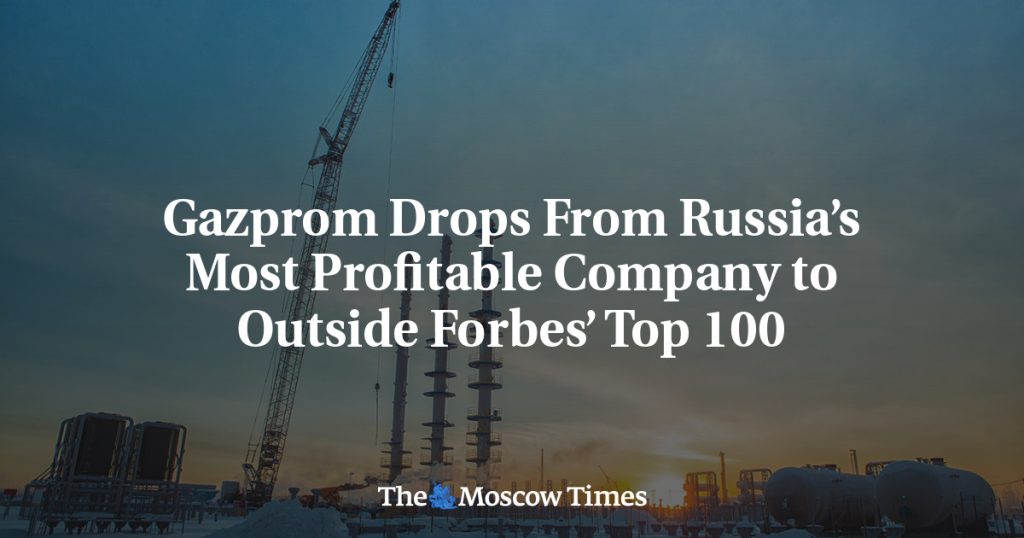Gazprom, once at the top of Russia’s most profitable companies, has fallen off Forbes Russia’s top 100 list for 2024 due to a record loss of 583 billion rubles ($6.3 billion) in 2023. This loss was attributed to Russia’s pivot towards Asia after Europe restricted imports in response to Russia’s invasion of Ukraine. Despite this record loss, Gazprom’s cash flow remained stable at 2.3 trillion rubles ($24.6 billion) in 2023, following a reported profit of 1.2 trillion rubles ($12.85 billion) in 2022, representing a 41% decline from the previous year.
Rosneft, the state oil company, took the top spot in Forbes Russia’s 2024 list with earnings of 1.5 trillion rubles ($16 billion), followed by banking giant Sber and refiner Surgutneftegaz, each reporting profits of 1.3 trillion rubles ($13.92 billion). The combined profits of the top 100 companies totaled 13.2 trillion rubles ($141.44 billion), up from 9.27 trillion rubles ($99.33 billion) the previous year. President Putin has ordered Gazprom to draft a 10-year plan to develop infrastructure necessary for changing the geography of supplies, as former buyers have opted for costlier alternatives, and Putin stated that they can rely on those more expensive resources if they choose.
The loss faced by Gazprom highlights the challenges the company is currently undergoing, as it is no longer able to maintain its position as one of Russia’s top companies. Despite the record loss in 2023, Gazprom’s cash flow remained stable, indicating that the situation may not be as dire as it seems on paper. The company’s struggles are attributed to geopolitical factors such as shifts in market demands and restrictions imposed by Europe in response to Russia’s actions in Ukraine.
The success of companies like Rosneft, Sber, and Surgutneftegaz in Forbes Russia’s 2024 list showcases the resilience and adaptability of the Russian business sector, which continues to thrive despite economic challenges. The increased profits reported by the top 100 companies indicate a positive trend in the Russian economy, with total profits reaching 13.2 trillion rubles ($141.44 billion) in 2024. This growth is a testament to the strength of the Russian business community and its ability to navigate changing market conditions.
President Putin’s directive for Gazprom to develop a 10-year plan highlights the government’s commitment to supporting the company and ensuring its long-term success. By focusing on changing the geography of supplies and adapting to new market demands, Gazprom may be able to overcome its current challenges and regain its position as a top company in Russia. Putin’s statement regarding former buyers opting for costlier alternatives reflects the competitive nature of the global energy market and the need for companies to adapt to remain competitive.
In conclusion, the shifting landscape of the Russian business sector, as evidenced by Gazprom’s fall from Forbes Russia’s top 100 list, highlights the impact of geopolitical factors on company performance. While Gazprom faces challenges, other companies like Rosneft and Sber continue to thrive, demonstrating the resilience of the Russian economy. By implementing strategies to adapt to changing market conditions and government support, Gazprom may be able to recover and regain its position as a leading company in Russia.Putin’s directive underscores the importance of innovation and flexibility in the face of evolving market demands, as companies seek to maintain their competitive edge.


